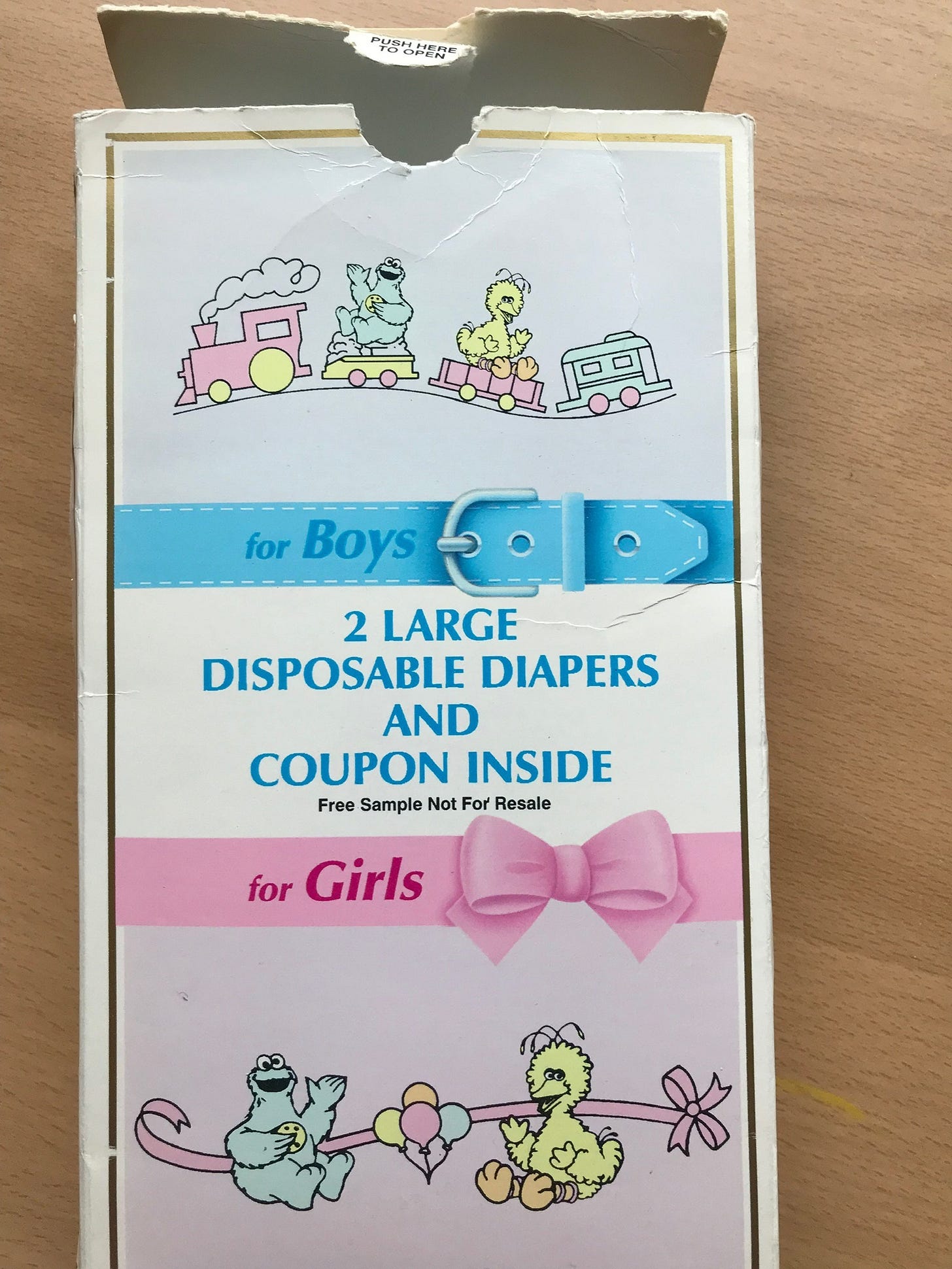“One is not born, but rather becomes, a woman.”
- Simone de Beauvoir, The Second Sex
But what about men? For most of my career, I’ve asked how the way we dress children reveals not only how we define masculinity and femininity, but our concerns about our children becoming the “right” kind of men and women. It’s a complex, messy history, as you can imagine. Lately, I have been thinking about the last forty years of boy-raising, as my own little boy closes in on his fortieth year. It was his arrival that shifted my research from masculine clothing (first men, then boys) to children’ clothing. He had an older sister, who had been dressed in the approved second-wave feminist style: primary colored t-shirts and overalls. Had they not been born in different seasons, he would have worn her hand-me-downs, but instead I had to go shopping for winter baby clothes instead of summer ones. Was I in for a surprise!
Something happened in the mid-1980s that only a fashion historian pregnant in 1986 and with an older child would have noticed. Unisex child-rearing was out.
My evidence:
Soon after I had my first prenatal visit, I received this sample package of Luvs disposable diapers in the mail.
Instead of an abundance of neutral shirts and onesies for newborns, I found much less yellow and green, and much, much more pink and blue.
Instead of plain solid color overalls, I found pastel styles with butterflies and flowers, and bright colored overalls with airplanes and footballs.
And then I found this:
The Little Boy Book, 1986
The authors promised to answer this question, among others:
“Aren’t boys more aggressive than girls only because we condition them to be so?” The answer, they claimed, was no. They explicitly rejected the “nurture, not nature” philosophy that helped raise the Free to be You and Me kids of the 1970s, instead offering parents advice based on recent studies of aggressive behavior in males ranging from preschoolers to college students.
In a similar fashion, they listed other innate differences between boys and girls, but their main argument boiled down to this: “males are more fragile than females in substantial ways”, which is the reason a book about the special needs of little boys was necessary. They did occasionally offer a reminder that individuals vary, and even that boys’ characteristics and abilities varied more than girls, but the general tone is essentialist. Boys are this, girls are that. Biological sex variations are mentioned only in the section on homosexuality.
Why the sudden shift? I suspect it was a cultural influence of two factors, one technological and the other demographic. The first was prenatal testing, especially sonograms, which became routine in the 1980s, with the 20-week image soon commonly known as the “gender sonogram”. This enabled baby product manufacturers to market boy-girl products to expectant parents. But why were the parents ripe for such marketing? I can offer one reason, based on my personal experience. From the time I knew I was carrying a “chromosomally normal male”, my imagination was furnished with every stereotype and expectation I’d acquired in my 37 years. So yes, I bought the onesie with the hand tools all over it.
The demographic reason might a little bit of a stretch, but I still like it. By the mid-1980s, women like myself were approaching the end of their childbearing years. Between 1980 and 1990, the proportion of births to first-time parents shifted from baby boomers to generation Xers, with the crossover occurring in the mid 1980s.
This matters because there’s a difference between being 23-year olds choosing gender-bending clothing for themselves in 1975 and being a child in 1975 having unisex clothing picked for you. As I wrote in an earlier post, it is likely that the boys in velvet cavalier suits (circa 1890) grew up to be fathers who rejected fancy dress styles for their sons. I think it is also possible that the children of the seventies became parents who preferred gendered clothing for their own kids. (Also, as my own story shows, gendered baby clothes could be pretty irresistible even for feminist boomers.) Unisex was out; the gender binary was in. If you were born in the 1980s or 1990s, you were raised in a pink and blue world. What difference do you think it made, for you?
Next week: Of course there was a companion book!








My 4 yr old had a choice of Minnie Mouse or Mickey when he was 2. They didn’t have Mickey so I figured he could do his business in a diaper that was just a good quality so he’d stay dry. But his dad? Didn’t they have Mickey? Donald? He’d already pooped in one so I pointed out he obviously did not care. I personally buy all baby gifts in yellow.
Oh, Jo, I, too, embraced gender neutral clothing (corduroy pants or Osk-Gosh overalls from thrift stores), but sometimes gave in to feminine t-shirts for my first-born daughter. By kindergarten, my daughter would only wear dresses.
When my son was born, he wore the hand-me-down girlie t-shirts until age 3 or 4, but then it was boy shirts only. All new clothing was “boy” stuff.